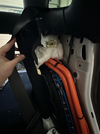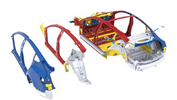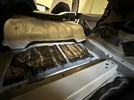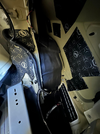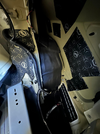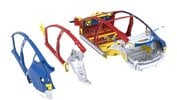Through the last few months, I have been watching and reading up the various posts regarding the many ways many of you all have attempted, as well as the various kits available online, to reduce if not eliminate road noise and wind noise from the Model3. After reviewing all those posts and review of the kits, I figured that since none of you have been able to achieve that elusive goal, let alone even come close to reducing the noise, made me ask the question: What are we missing?
So as I kept driving my M3, I attempted to focus on finding those missing sources ie where is the noise emanating into the cabin from. Turns out they are the 4 corners of the cabin ie the A-Pillars and C-pillars. More specifically, the A-Pillars for wind noise and C-Pillars for road noise.
#1 - The solution for wind noise is the following - Z Weatherstrip down inside the leading edge of the front door, and foam block at the top triangle where the front fender, windshield and door meet.
Z-Weatherstrip

Foam at the junction

#2 - The solution for road noise is the following - 2" Fiber insulation behind the rear seat side panels that cover the rear wheel wells.


I hope this helps everyone who have been pursuing this goal. Thanks for all the contributions and many thanks to @XPsionic for his constant engagement and interest.
So as I kept driving my M3, I attempted to focus on finding those missing sources ie where is the noise emanating into the cabin from. Turns out they are the 4 corners of the cabin ie the A-Pillars and C-pillars. More specifically, the A-Pillars for wind noise and C-Pillars for road noise.
#1 - The solution for wind noise is the following - Z Weatherstrip down inside the leading edge of the front door, and foam block at the top triangle where the front fender, windshield and door meet.
Z-Weatherstrip
Foam at the junction
#2 - The solution for road noise is the following - 2" Fiber insulation behind the rear seat side panels that cover the rear wheel wells.
I hope this helps everyone who have been pursuing this goal. Thanks for all the contributions and many thanks to @XPsionic for his constant engagement and interest.



